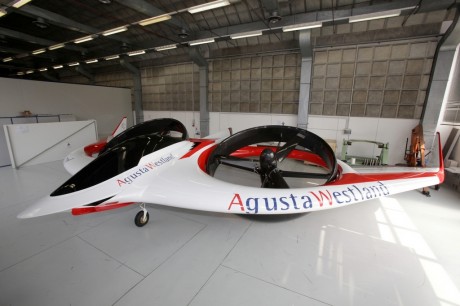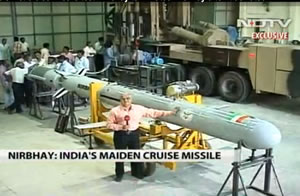ARTICLE from Diplomat.com
Violence has escalated on Sabah, where the Sultan of Sulu and his troops remain firm in their demands.
When about
200 supporters of the Sultan of Sulu packed M16s into boats and made the one-hour crossing from Sulu in the southern Philippines to Lahad Datu in Malaysian Borneo’s eastern Sabah on February 9, no-one took much notice.
Initial international media reports a few days later were vague about who the group was. Even in their native Philippines, many had no idea what Jamalul Kiram III, who claims to be the heir to the Islamic sultanate of Sulu, was prepared to fight for. But they certainly do now.
Even before Malaysia attacked the group with fighter jets on Tuesday,the crisis
had escalated and spread rapidly. Last Friday,
12 Filipinos and two Malaysian counter-terrorism police were killed in a shootout, while six more police and 11 Filipinos, including two imams, were reportedly killed 190 miles (300 km) south in Semporna. Meanwhile, the sultan’s son and the group’s leader Raja Muda Kiram have dispersed with surviving members of the group. Political fallout in both the Philippines and Malaysia has grown by the day.
The standoff has not only tested Philippine-Malaysia ties, it has also had implications for the imminent elections in both countries as well as the fragile Philippines peace process.
Dating back to the late 19th century when the British ruled Malaya, the sultan’s claim to parts of the eastern half of Sabah (formerly known as North Borneo) has resurrected one of the biggest sovereignty disputes by land area in the region. Successive Malaysian and Philippine administrations have found it much simpler to sweep the issue under the carpet than resolve it once and for all.
It’s a status quo that Abraham Idjirani, secretary-general and spokesperson for the sultanate, says Manila has tried to preserve in the name of safeguarding ties with Kuala Lumpur as the dispute has come to a boil.
“The only request from both sides is to surrender – this appears to be the policy of both governments,” he told The Diplomat on Sunday after the violence spread to Semporna.
In trying to rein in the sultan, Philippine President Benigno Aquino has changed his stance almost daily. At first, he tried to entice the sultan’s men back. Then, Aquino said his administration would seek to prosecute the sultan and his followers. After violence erupted last Friday he said all would be forgotten, if only the group would return.
As the election campaign kicks off ahead of Senate and mayoral polls in mid-May, Aquino and his ruling Liberal Party are coming under growing criticism by the press, public and an opposition keen to score political points.
An
opinion article in the
Philippines Star called Aquino “clueless” on Sunday, while the Opposition National Alliance – opponents for the Senate race – complained of
“arrogance” in dealings with the sultan during a press briefing the same day.
Following Tuesday’s assault, headlines in the Philippine press will likely reflect the severity of the situation that many view as a battle between Filipinos and Malaysians, with Aquino doing little to help his countrymen.
Meanwhile, Malaysia’s approach to handling the situation has been viewed as heavy-handed outside the country but too lax at home.
When the sultan’s followers first landed, the Malaysian government ordered police to surround the group, with initial orders to keep the army withdrawn to avoid escalating the situation. They also imposed a
food blockade aimed at flushing out the insurgents.
Speaking during an election campaign visit to Sabah on February 14, Malaysian Prime Minister Najib Razak emphasized the need for a peaceful solution which he backed with a gentle warning.
“In terms of strength, we have the upper hand in combat power to arrest them, but the government opts for negotiation to break the stalemate so that they leave peacefully to southern Philippines,” Malaysian state news agency
Bernama quoted Najib as saying. Najib’s comments in this instance were the only time Malaysia’s leader spoke publically about the crisis before the death toll started to climb on Friday.
On Tuesday, as warplanes attacked the Sultan’s supporters, only 30 of whom were reported to be armed, Najib attempted to justify the assault in democratic terms.
“The government has to take the appropriate action to protect national pride and sovereignty as our people have demanded,”
he said in a statement issued through state news agency Bernama.
Najib’s handling of the crisis is seen domestically as a critical test of his leadership – especially in Sabah – ahead of a tightly fought general election due by the end of June.
On Sunday, the prime minister retaliated after the main opposition accused the ruling United Malays National Organization of
staging the shootout as part of a pre-election set-piece designed to rally Malaysians around the administration. This claim has been fuelled by overt propagandizing. Immediately after Friday’s shootout, the government claimed it had captured 10 insurgents and that the standoff was over after the sultan’s supporters had fled back to the Philippines, an account which proved to be entirely false.
Although a recent survey by the Merdeka Institute in Kuala Lumpur found
70 percent support among ethnic Malays for the ruling United Malays National Organization, Jerry Kamijan, deputy chief editor of the
New Sabah Times, said that the longer the crisis drags on, the more people will criticize the government’s handling of it.
“There is a lot of concern on the ground,” he said. “It is as if we have been held to ransom by the intruders.”
While Kamijan dismisses the sultan’s move as an attempt to extract money, supporters say the strengths of the sultan’s claims are historic and reportedly significant. The Malaysian Embassy in Manila
pays 5,300 ringgits (US$1,715) to the sultanate every year, the terms of the British colonial-era deal. There is also the question of the large Filipino population in Sabah, particularly in the disputed area.
No one knows just how many Filipinos live in Sabah – many are illegal – but in calling for a lasting solution, Philippine senators on Saturday put the figure at
more than 800,000, out of a
total population of 3.2 million. This suggests that around a quarter of the population of Sabah are Filipinos, who mostly live in the disputed eastern side of the state.
“A just and peaceful resolution of the sovereign claim of the Sulu Sultanate … will remove a thorny issue that has caused much uncertainty in the relationship between Malaysia and the Philippines,” Amina Rasul, president of the Philippine Center for Islam and Democracy,
said in a statement.
Ties between the two countries are almost certain to be strained further before they can begin to heal, as the Philippine government has talked openly in recent days about the prospect of
filing a case with the International Court of Justice.
On the ground in Sabah, relations between nationals of both countries have already started to deteriorate rapidly. Idjirani says the violence in Semporno took place after Malaysian security forces went to the area to search for key figures from the Sulu Sultanate. After Malaysian forces reportedly killed two imams who have lived in the area for decades – but who are originally from the islands of Sulu and Tawi Tawi within the sultanate – gunmen then retaliated and killed five Malaysians, he said.
“There are organized, patriotic efforts by people in this area,” Idjirani adds.
Amid rising tensions, news reports this week say that some Malaysian bosses are firing their Filipino workers – many from areas within the sultanate – amid a crackdown on Filipinos in Sabah.
The original group reportedly scattered after Tuesday’s assault and Malaysian security forces in the area have doubled. Yet, there is little sign the security situation will improve soon.
Meanwhile, on Tawi Tawi and Sulu and in the west of Mindanao, the Moro National Liberation Front (MNLF) – a former rebel group which signed a ceasefire deal in 1996 but which retains limited arms – is reportedly on alert and is standing by to support the sultan. MNLF leaders, however, have denied direct involvement in the ongoing standoff.
Both MNLF and the sultan’s inner circle have indicated that they feel increasingly marginalized by the Philippines ongoing peace process, which has directly involved just a handful of the 13 Muslim groups that occupy large swathes of the southern island of Mindanao.
A few days after the Aquino administration signed an October peace framework with the Moro Islamic Liberation Front (MILF), another insurgent group in Mindanao, MNLF attempted to call on supporters in the city of Davao to rise up, an effort which ultimately failed.
Since then, MILF has taken the lead in fleshing out a peace deal with Manila that is expected to result in a newly calibrated autonomous region in Mindanao called Bangsamoro.
With Malaysia acting as mediator – the latest chapter of the deal was
signed in Kuala Lumpur last week – critics in the Philippines are increasingly adamant that Malaysia is far from objective in resolving this complex political problem. Malaysian soldiers on the ground monitoring a ceasefire in Mindanao were advised on Saturday to limit their movements amid fears of retaliation by supporters of the sultan.
Earl Parreno, a political analyst and member of the board of trustees of the Institute for Political and Electoral Reforms, a Manila-based think-tank, says the sultan’s recent gambit makes sense if he is to seize the initiative within the evolving power dynamics of the southern Philippines.
“It’s the perfect time for the sultan to address it now, before the peace process goes into more detail,” Parreno told The Diplomat.
But will the Sultan’s gambit work? Efforts to reclaim the eastern half of Sabah look increasingly like a guerilla operation and a messy, protracted dispute looks likely.
Kiram has remained defiant since the day his supporters made the trip across the sea. He said: “We are prepared to defend our lives and aspirations.”
Steve Finch is a freelance journalist based in Bangkok. His work has appeared in the Washington Post, Foreign Policy, TIME, The Independent, Toronto Star and Bangkok Post among others.
Editor's Note: We have updated the text to reflect new information.









